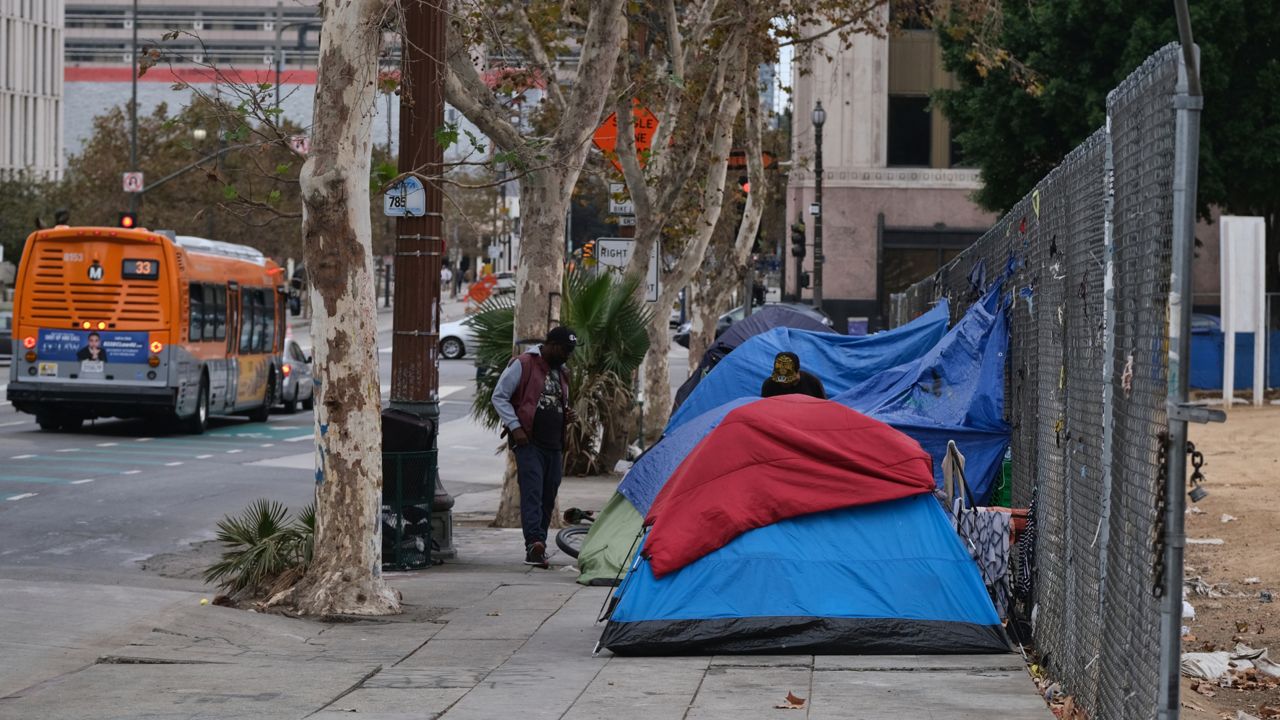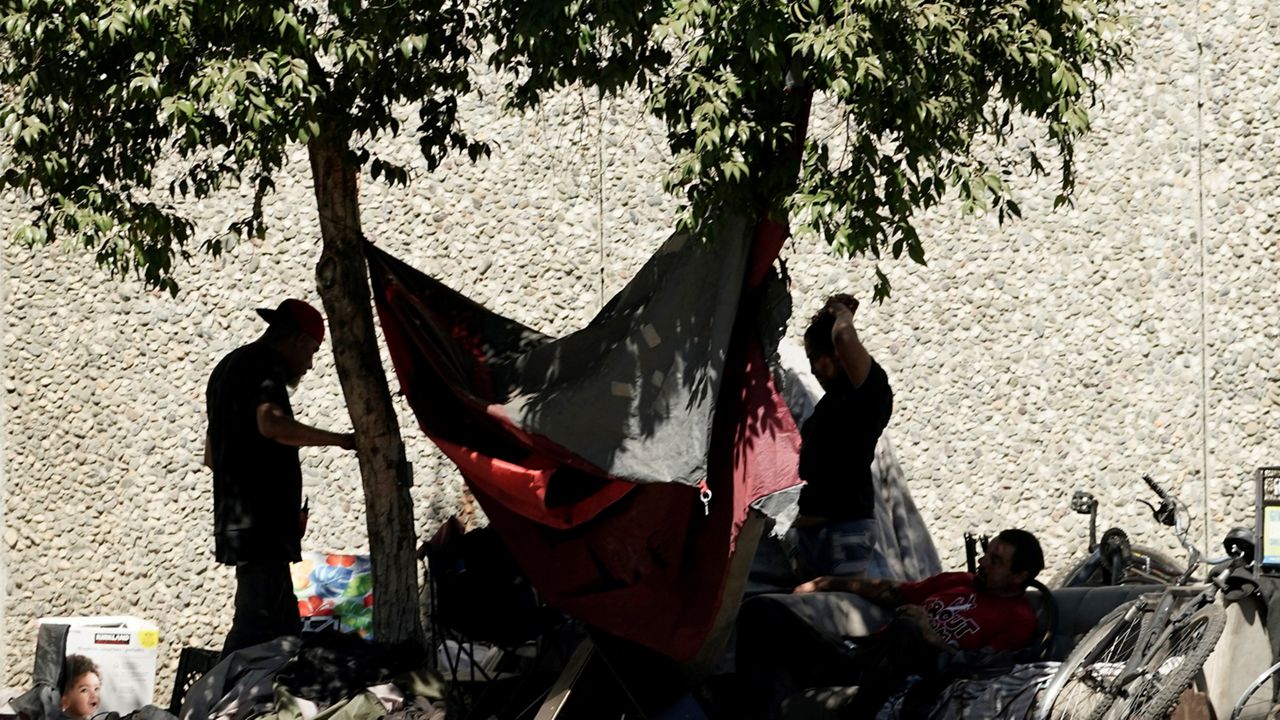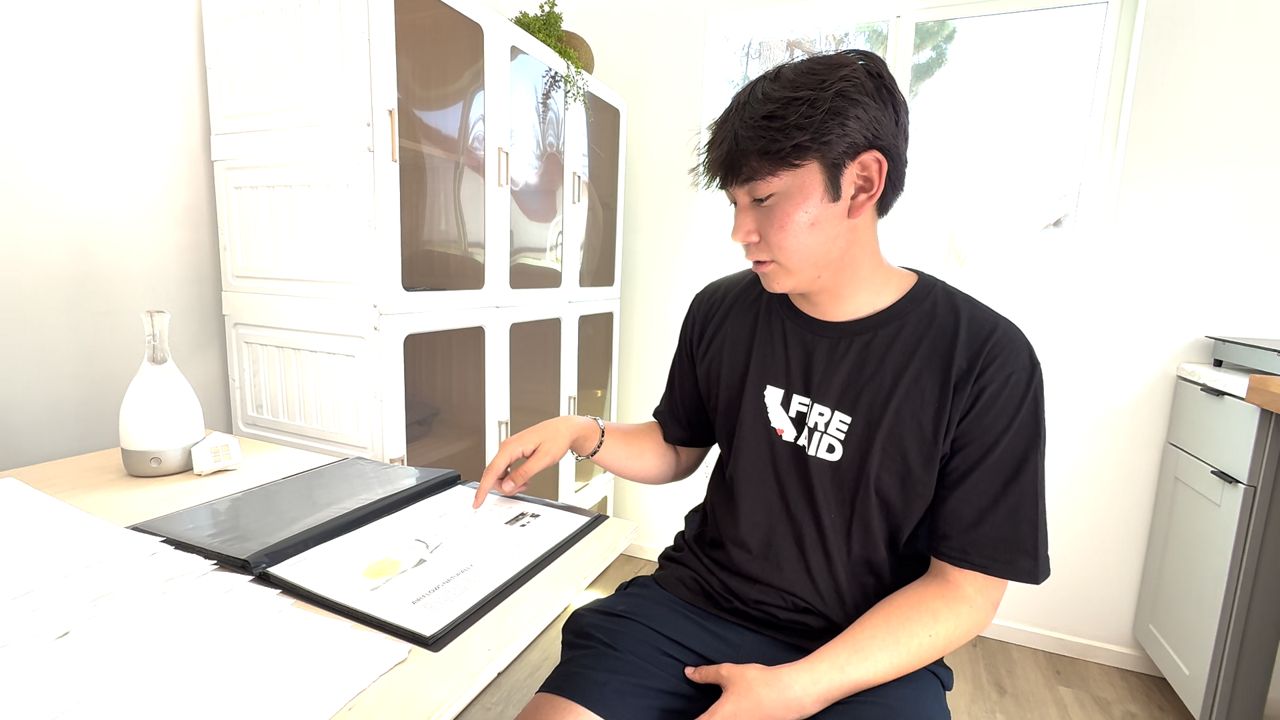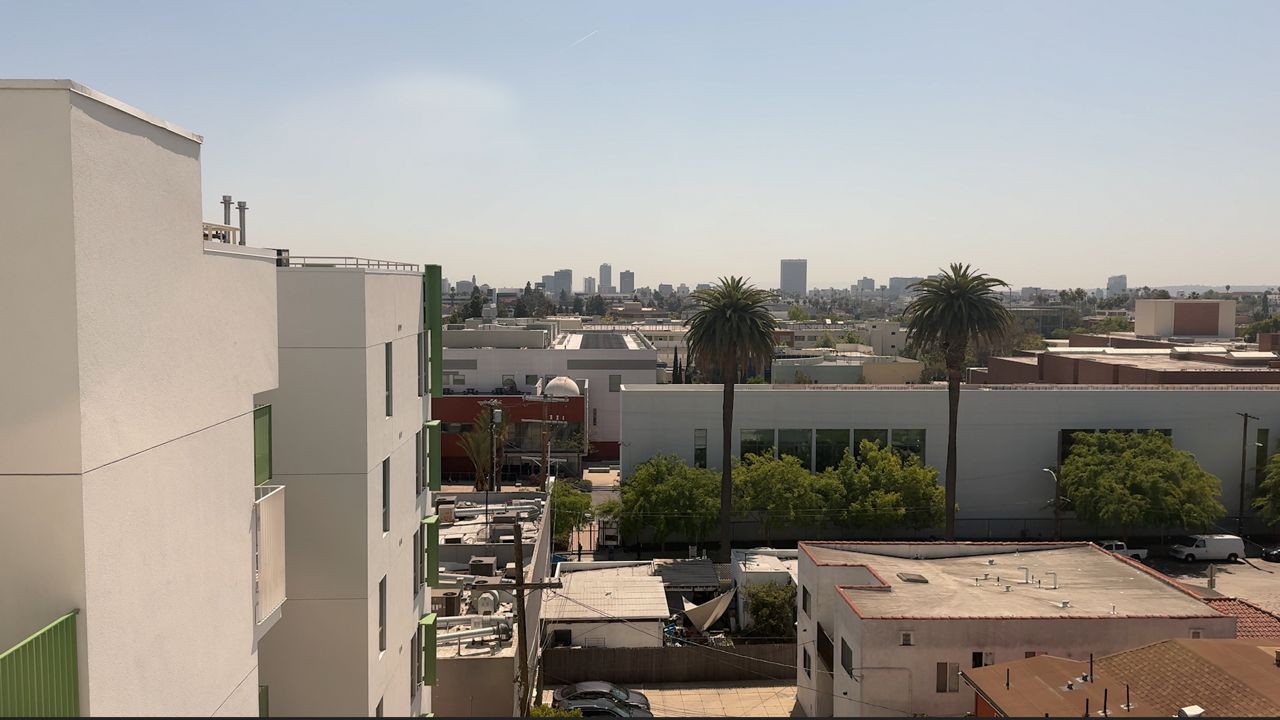LOS ANGELES — At a safe parking site in Los Angeles, 77-year-old Jose Villa is getting ready to spend a chilly night in his car.
“Here is the mattress, from here to there,” he says in Spanish pointing to the mattress he installed in his car after removing the front passenger seat.
Villa has “macgyvered” his way through homelessness for the last year.
“Here are my blankets, I lay them out this way,” Villa said.
He also uses his car heater at times to stay warm. He could be even warmer if he walked 100 yards away to the Weather-Activated Winter Shelter Program at the Glassell Park Recreation Center, which First to Serve and The Shower of Hope are servicing.
Robert Rodriguez who works for the shower of hope, knows exactly how hard the nights can be, after all he has been living out of his car for the last year.
“The cold air comes in sometimes you know, nothing is 100%,” Rodriguez said. “So it creeps in little by little. So yeah, I wake up with my feet pretty cold.”
That’s why he is thankful that The Shower of Hope is not just providing homeless people access to a hot shower, but also giving them items they’ll need to stay warm overnight, weather they decide to use the shelter or not.
“Different types of beanies and scarves, different colors and different sizes … really good thick socks … and they’re giving out hoodies,” Rodriguez said.
In the last few years, more homeless people have died in LA from hypothermia than in San Francisco and New York City combined.
“Tonight, it’s going to drop to 39 degrees,” said Mel Tillekeratne, who is the co-founder and executive director of The Shower of Hope So. “For the folks using this [shelter] it’s probably going to save a couple of lives of people who could have succumbed to hypothermia.”
Mel says these cold weather shelters have a secondary effect.
“There are some folks who are reluctant to get services,” Tillekeratne said. “For those folks, they do come in when it gets this cold. And once they come in, once they build trust, once they feel comfortable, some of them work towards case management, towards getting off the streets permanently.”
But it can still be a challenge to get homeless people to use the shelter. When we visited only 10% of beds were in use.
Villa has turned down this and other forms of temporary shelter that have been offered to him, he says it’s too much of a hassle.
“I could go to a place for a week or two and leave my car, but I’m already fine here. I’m fine,” Villa said.
So despite the warnings and services, Villa stays in the cold, until a permanent solution to his problems comes along.











